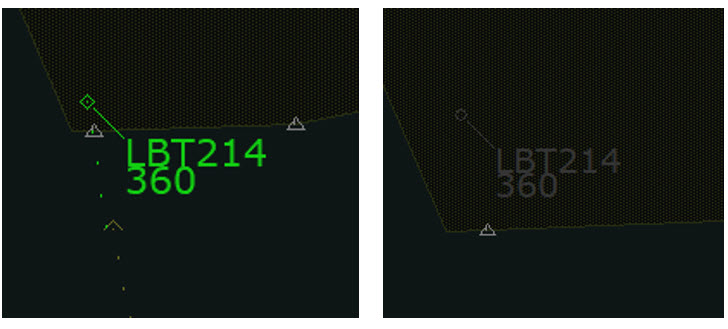At any one time, air traffic controllers may have up to twenty aircraft on their screen depending on traffic conditions and the day of the week. While the number of aircraft that a controller can manage is capped to ensure safe handling of traffic, the situation remains demanding and complex. This is where the innovative SESAR solution, attention guidance, comes in. An algorithm built into the system that can remove potentially non-conflictual aircraft from the controller monitoring by changing the label to a fade-out colour. In other words, aircraft that pose no risk to other airspace users are faded out to enable controllers to focus on the more safety-critical traffic.
“In contrast to conventional practice, the system shares responsibility between the human being and the machine,” explains Johann Pradel, Business Optimisation Manager for Skyguide, and PROSA project partner in SESAR PJ.10-W2 96 Attention Guidance. “This solution offloads monitoring tasks from the controller, creating the ability to increase capacity” he adds.
Knowing which flights to fade-out is determined by an algorithm developed by project partner Skysoft-ATM and applies to each and every aircraft not generating a conflict (largely) from sector entry to exit. Jean-Paul Meira from Skysoft-ATM explains, “The algorithm builds a flight profile, starting from the exit point and moves backwards to the entry point, ensuring lateral separation above 20 nautical miles and no vertical interception, considering any controller input would come with an update time of four seconds. With fewer tracks to monitor, the controller can focus on the aircraft that need his/her attention.” These safety margins may be amended (offline). They are of the utmost importance for the safety case before implementation and decisive to establish the potential for an increase in airspace capacity.
Controllers at Geneva area centre, who tested the solution at typical cruising altitudes above FL355 initially, found it hard to accept this shared responsibility with a machine. However, controllers adapted quickly and called it “a promising solution”, even asking for its help during busy scenarios, according to reports by Jean-Paul Meira. “We involved controllers from the very beginning and worked together to create a user-friendly interface.” The involvement of controllers was critical to avoid destabilising the existing human machine interface, while adding the fade-out solution.
Faded-out aircraft labels do not disappear for good once the functionality is activated.
Controllers maintain full situation awareness since faded-out labels return to normal display via an intermediate normal display, when an action taken on them or on others leads to reduced spacing (initial 20NM). The labels will instantly return to green in case of alarm or discrepancy between ground and aircraft trajectories. A “direction finder” line allows controllers to easily find a call from a faded-out aircraft, and all needed pops up are displayed in white for any action to take on these faded-out labels. A “handover” function is also available to help identify faded-out labels during handover. In case an aircraft (normal display or in fade-out mode) would request a change to its trajectory, a detection tool informs the controller of each fade-out aircraft, above and below, that would cross closer than 10 NM, by displaying the level(s) in the cleared flight level (CFL) menu and the label of the fade out aircraft in orange. The experts liken it to a third controller taking over responsibility for fade-out aircraft and informing the controller of any action to take (climb, descent, contact), when necessary.
Johann Pradel says the technology supports further capabilities. “Non-conflictual, faded-out aircraft are perfect candidates for controller pilot data link communications (CPDLC) messages because they are inherently "non-time critical" in terms of the instructions they may receive. Why wouldn't we use the opportunity to assign these CPDLC messages to the planner, thus not only reducing the monitoring workload of the executive controller, but also the frequency workload and congestion?”
This solution has reached the technical readiness level 6 (TRL 6) on 21 March., meaning testing can not start on the technical elements in operational scenarios, says Pradel: “The solution can operate in any area control centre airspace. Relieving the controller of some monitoring tasks promises plenty more opportunities.”
More about the solution
More about PROSA

